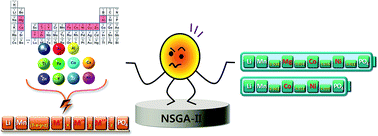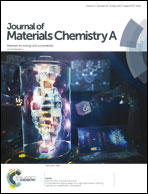A multi-element doping design for a high-performance LiMnPO4 cathode via metaheuristic computation†
Abstract
Low-level doping of electrode materials is known to be a common and simple method that can be used to improve electrode performance. However, multi-element doping compositions have generally been confined to the empirical intuition of researchers via trial-and-error. Here we propose a more systematic approach to designing multi-element doping compositions for electrode materials via a non-dominated sorting genetic algorithm (NSGA-II)-based computation. LiMnPO4 was selected to demonstrate our strategy not only because of its promising features such as a high operating voltage, comparable capacity, and structural stability, but also because it is known for insufficient electrochemical performance with poor reversibility and rate capability. In this study, a NSGA-II was employed to determine the optimum multi-element doping composition at the Mn site of olivine-structured LiMnPO4 through six consecutive generations, each of which contained 25 dopant sets that finally led to the pinpointing of two potential candidates for a multi-element doped LiMnPO4. The applicability of this strategy could be expanded to the discovery of a number of advanced electrode materials that would be useful in the field of battery research.

- This article is part of the themed collection: 2017 Journal of Materials Chemistry A HOT Papers


 Please wait while we load your content...
Please wait while we load your content...